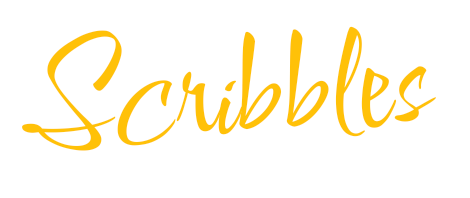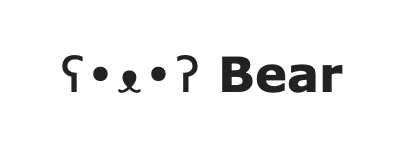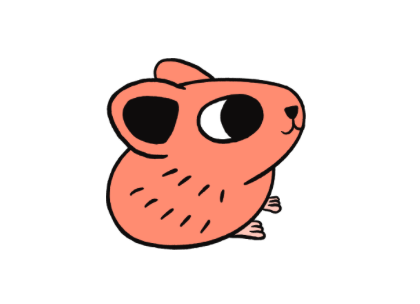Simple Blogging Platforms Nobody Talks About

You might wonder why a photography blog would publish posts about blogging platforms.
Like photography, writing is another form of creativity. Another way to share ideas, tell stories, or share thoughts.
I enjoy writing as much as I enjoy photography. Though the former requires little to no expensive gear.
When I published Minimalist Blogging Platforms for the Confused, I never imagined it would get so much attention. The post attracts up to 2,400 visits a year. Small by some standards, but big for this humble blog.
If anything, the post about minimalist blogging platforms proves it. People want to write, and blogging is alive and well. And when blogging, people want to keep it simple.
The platforms I reviewed are minimalist. Some of you may want the bare necessities. Finished products, but with offerings that remove the need for technical work. This lets you focus on creating content.
This post is a summary of some simple blogging platforms. They provide a clean, no-nonsense outlet for your creativity and ideas.
Essentials Remain Unchanged
We will assess these platforms against my previous criteria. We want to see if they are worth your time, energy, and, in some cases, your money.
A quick recap of the assessment criteria.
- Longevity: We want to be sure our writing platform will not vanish. It should be under active development. It is hard to judge this one, and it can be a leap of faith, but it is worth considering.
- Value for money: Writing should be affordable. Platforms have costs, and you have a budget. A sensible business model will help keep the platform afloat.
- No coding skills: It is minimalist after all, and who wants to fiddle with themes and tweak code?
- Ease of hosting: We want others to do the technical stuff.
- Good reviews: We don’t want to be the only ones there.
- Exportable: Leaving a platform must be easy. A writer owns their work and retains the right to take that work to another platform.
The Blogging Universe
You might think it's easy to find reliable and simple blogging platforms. In some ways, it is. But there are countless options. A quick search on Google will show you many options but the results often contain the usual suspects - Medium, Wix, Squarespace, and lots of other clunky or abandoned platforms.
I have sought out the promising alternatives.
I have tried some of the following options, while others have piqued my interest. The best way to know if something fits with your needs is to give it a try. What’s the worst that can happen?
Simple Blogging Platforms
Microblog

Micro.blog began in 2017 and offers two main ways to blog. You can host your blog, with your own domain if you wish, and publish to your heart’s content. The second strand is a built-in community, like a social media network. The network enables you to follow other blogs and engage in discussions.
Microblog is for posting short thoughts, long essays, photos, podcasts, or anything. The service has a strong moderation commitment. This may cause concern or be encouraging, depending on your view.
Microblog’s Key Features
- No algorithm.
- No advertising.
- Built-in social media-style community.
- Chronological timeline.
- Part of the IndieWeb and Fediverse.
- Cross-posting to social platforms.
- Companion smartphone apps.
- Affordable from $1 per month.
On the last point, consider the $5 monthly tier to begin. It includes cross-posting and gives the platform support. There are $10 and $15 tiers if you need what they offer.
I enjoyed my time on Microblog and regretted leaving. The reason I left might be the subject of another story, but in short, I panicked about being on the web.
There are simple themes to choose from, and if you know any coding, you can change these if desired. All domains have got an SSL certificate. The Help section has detailed info.
Despite my insecurities, there was a healthy community on Microblog. It had a range of interests. After a while, I began to connect with some users. Microblog offers long-form publishing, Twitter-style micro-posts, and a community in one place.
One of its strengths can be one of its weaknesses. The community can feel like a family, and I felt on the outside. But that’s me. Engagement can be distracting. A distraction from what you want to do - write and publish.
A small team of three develops the platform on an ongoing basis. What this means for longevity is impossible to tell. But, if you want a cheap, simple publishing platform, Microblog is a strong candidate.
Scribbles

There is a direct relationship between Microblog and Scribbles. Vincent Ritter, one of the Microblog team, has gone on a sole venture with Scribbles. This is no breakaway endeavour. He remains with Microblog, and he has developed a range of other software products.
There is no surprise that Scribbles is like Microblog. Simplicity is the goal. You can start your blog in seconds, use a minimal theme, and a clean writing editor. You have options to customise your theme's look and colour styling.
Scribbles’ landing page gives little information, but that’s because of its simplicity.
Scribbles’ Key Features
- No algorithm.
- No advertising.
- Modern app-style appearance with quirky animations.
- Free trial offers 25 published posts.
- Affordable at $5 per month.
- No learning curve.
- Can use own domain.
I had a mixed experience with Scribbles. It offers simplicity. The writing editor is like Ghost's. But the community is in its early stage. Like the Svbtle platform, there is a Kudos system where you can give ‘likes’ to posts on the platform. Writing on Scribbles is fun. But the blogs appear predominantly tech-focused compared to Microblog, and male-dominated.
Kudos to Scribbles for pointing to its blogs. It lets potential users see who uses the platform and encourages inter-blog support.
Scribbles is a clean, modern publishing platform. If you're unsure about blogging, it might be a good way to test the water without your blog looking like something from the 1990s.
Like Microblog, you can write short thoughts or long-form content. One thing I did notice is that many users on the platform had multiple blogs, including Microblog. It appeared as if they were trying out Scribbles and their main blog was on another platform. I confess this was my intention. To write detailed articles on Ghost and short pieces on Scribbles.
I could be wrong, but publishing on Scribbles felt like publishing to other users, not the web. Of course, this was an impression, as your posts will be on the web.
Scribbles is under active development by Vincent Ritter and remains a one-man project. For this reason, it may not be the best place for your main web presence. But, for an informal blog, Scribbles is a good choice.
Bear

Avoid confusion with the iOS note-taking app Bear. This Bear is another of the newest minimalist blogging platforms.
Bear, to quote, is “a privacy-first, no-nonsense, super-fast blogging platform. No trackers, no JavaScript, no stylesheets. Just your words”.
One challenge when writing reviews on minimalist blogging platforms is finding different angles. I have doubts about the ‘Key Features’ listings in this post, as they risk repeating the same items.
Bear presents this challenge. It is clean, simple, takes the technology out of your way, and lets you write and publish with ease.
Bear’s Key Features
- No algorithm.
- No advertising.
- Tiny file sizes mean fast speeds.
- Easy to sign up and begin.
- No learning curve.
- Use your own domain.
- Inexpensive.
- Focuses on your words.
The Bear platform is free. But, to connect a custom domain (and use a few other features), there is a $5 subscription.
Bear makes a point in its documentation that it will avoid all the bells and whistles. That’s a good thing.
I found Bear easy to set up and use. There is no learning curve. But you must complete your metadata for good SEO.
Of the platforms in this post, Bear is the first to make reference to SEO in its documentation. Bear posts have templates to help you add the meta tags, social tags, and open-graph content. This is auto-completed, and you can change any of it with ease. There is a robots.txt file and sitemap.xml which autogenerate on every update to your site.
Your job is to write good content.
Bear looks bare bones, but that is its appeal. Bear's discovery tab is open to visitors. You can judge if you'd be comfortable in such company. You can ignore fellow users. Like with Scribbles, write, publish, and forget about who uses the platform.
Pika

Have you spotted a recurring theme? There is a market for bare-bones blogging platforms. As I write this, it is clear that the technology and approach are similar. What does differ is the vibe each platform transmits.
This brings me to Pika. Launched in January 2024, and by December, it had 200 subscribers.
At the risk of offending the creators, Pika is a cute little blogging platform. It has the hallmarks of Bear but with added personality. This may be due to the artistry of the creators, but it is what it is.
Pika offers a minimalist writing interface. It makes it easy to format your posts and tweak your blog's theme.
Pika’s Key Features
- No algorithm.
- No advertising.
- Easy to sign up and begin.
- Free up to 50 posts.
- No learning curve.
- Use your own domain.
- Inexpensive.
- Built-in guestbook entries.
From Pika’s own blog:
With Pika we’ve built a better way to set up your own address on the internet. It’s quick to get going and looks pretty darn good out of the box, no fiddling required. You can get to writing blog posts in no time. If you’d like to stand up a personal website to go with your blog, we’ve got you covered there as well. Ain’t no stopping you now!
I have no experience with Pika. But, if I start another blog, Pika would be a contender. It appears young and growing, but most of all I like its vibe. A small and dedicated team built it with passion.
In late 2024, Pika launched the Pika Pulse. It's a discovery tool to introduce users and non-users to other Pika blogs. This will show you Pika's culture and the bloggers it attracts. You'll see if you like the vibe.
Pika is free for 50 posts, rising to $6 per month or $60 per year for a Pro account. Pro gives you the ability to use your own domain and remove Pika branding.
The team at Good Enough produces a range of products, and I use their free Contact Form, Letterbird, on this blog.
Mataroa
The most stripped-back of them all. Mataroa is like Bear. Created by Theodore in 2020, the developer acknowledges Bear as his inspiration. It's so minimalist, it doesn't even have a logo. ☹️
As with Bear, we have a bare-bones set-up and only a few bones. No coding, simple styling, speedy site, no ads or tracking. If WordPress is an ocean cruise ship, Mataroa is a small speedboat. It provides the essentials, nothing more.
There are no themes to distract you; it uses your system’s fonts and has a dark mode if your browser supports it. The editor, like others, uses Markdown. That’s about it.
Mataroa’s Key Features
- No algorithm.
- No advertising.
- Easy to sign up and begin.
- Free.
- Access to all features $9 per year.
- $9 per year allows own domains.
- Exporting your content is easy.
Let’s be honest. $9 per year is free. If you want a free way to try blogging, try Mataroa. It's a good option before switching to another platform. You might tempt yourself to stay.
Mataroa is open about what it is. It published its user numbers, income, and spending. It is a small venture and you will have to decide if that is a concern for you.
One negative is the absence of SEO support. But as advised on Bear, the key to good SEO is writing good content that readers will find helpful. SEO may be of interest to bloggers who want to journal their thoughts and follow the true essence of a weblog.
Simple Blogging Platforms Summary
I find it difficult to make a recommendation without understanding your particular needs. All the blogging platforms mentioned are minimalist. They offer the essentials, but each has its own vibe.
Small teams or individuals operate them. Longevity could challenge everyone. In that case, they are all equal.
But my thoughts at this stage would suggest the following:
Microblog - for a Twitter-like social media experience, with a built-in community. It lets you publish both long and short content.
Scribbles - a modern look and similar to Microblog, without the social media experience. But there’s nothing to stop you publishing micro-posts on your blog.
Bear or Pika - if you want a simple, fast, no-fuss blog.
Mataroa - if you want a bare-bones but fast blog to offload, experiment with writing, or test the waters.
Wrap Up
I love minimalist blogging platforms. I've spent an eternity fixing things in WordPress.
OMG, the torture of using a plugin for this or a plugin for that. WordPress demands the 80/20 rule. 80% of your time fiddling with your site and 20% of your time writing and publishing.
If all you want to do is write, go minimalist, and I hope I have given you some options to think about.
Thanks for reading this far. If you found this story helpful, please consider buying me a coffee. It would mean so much. 😊



